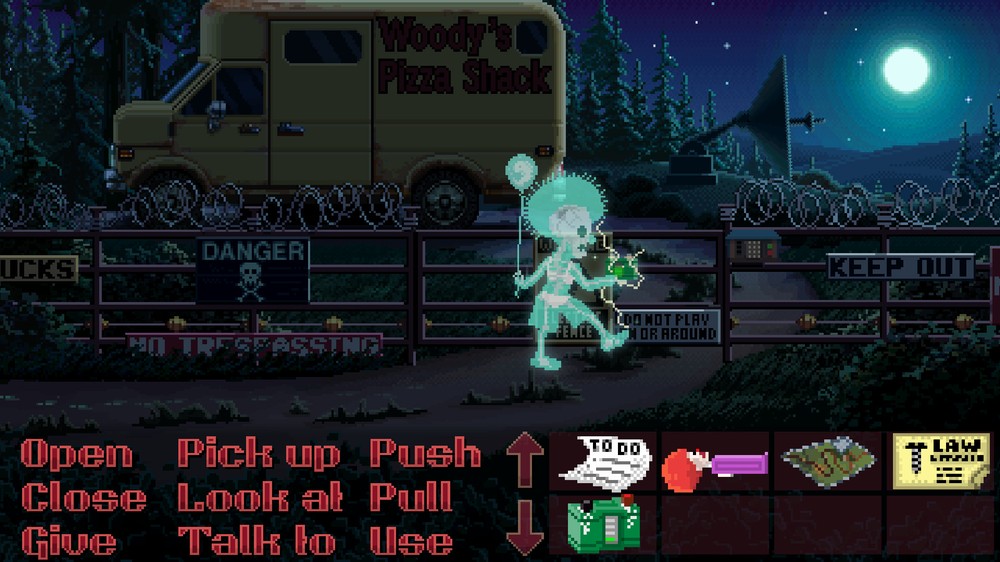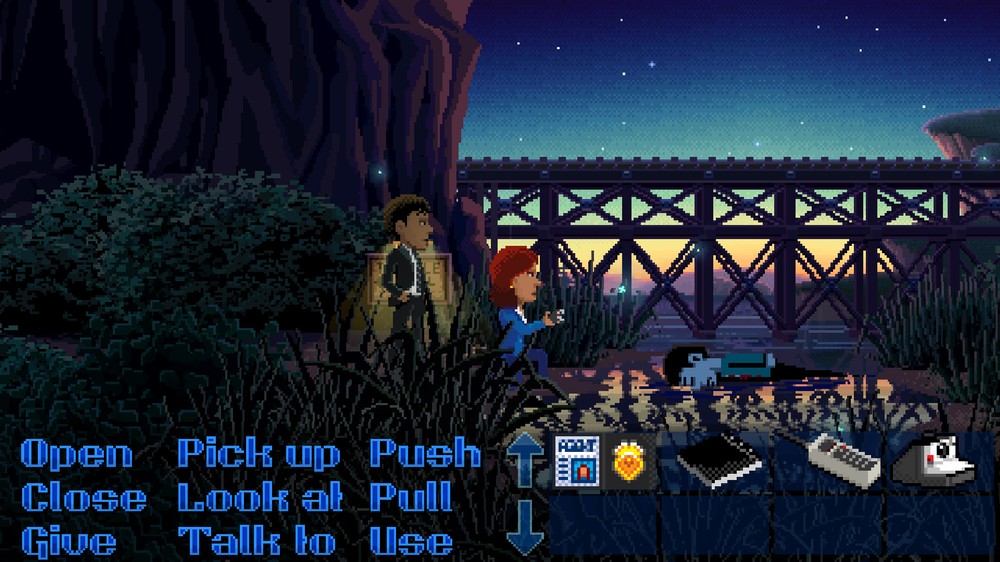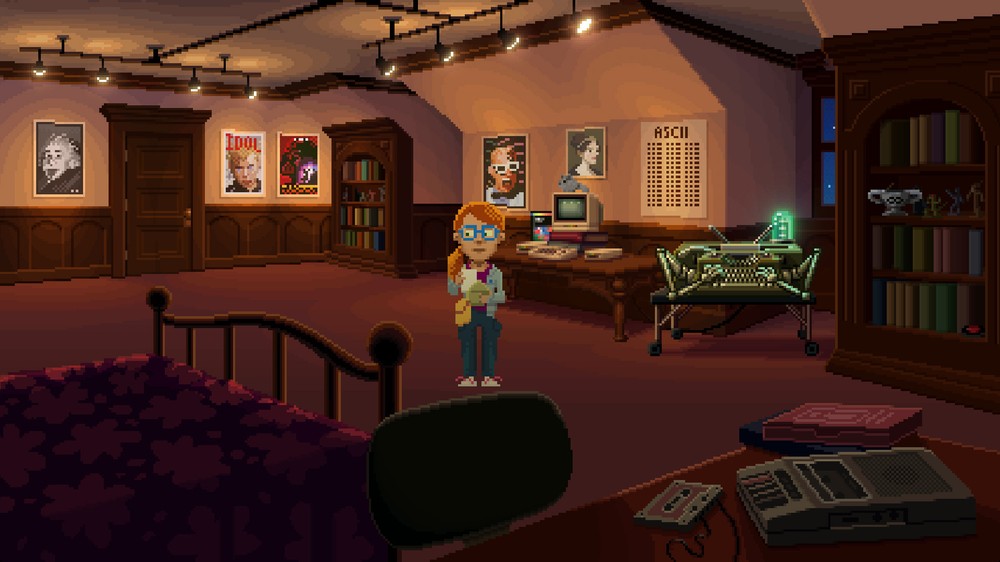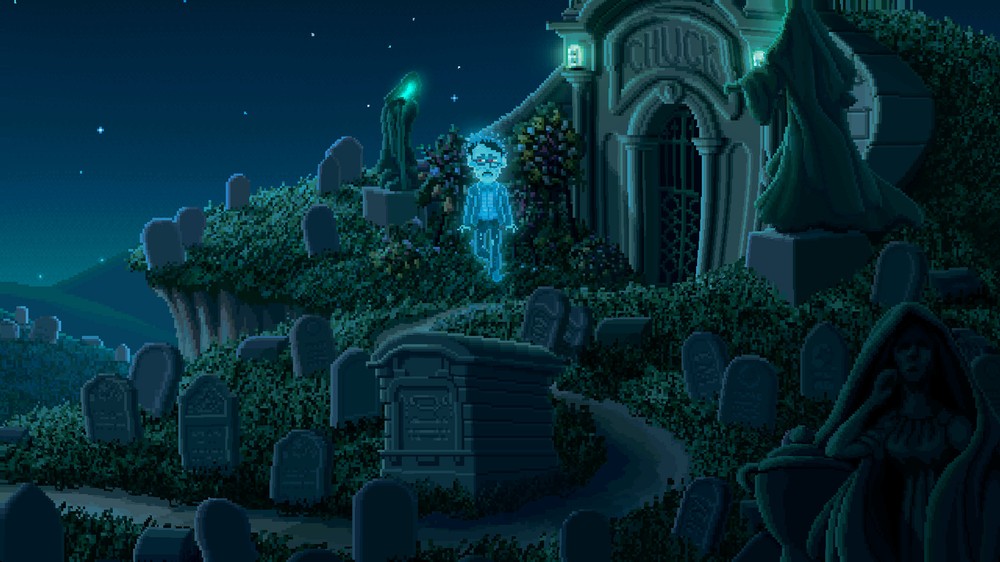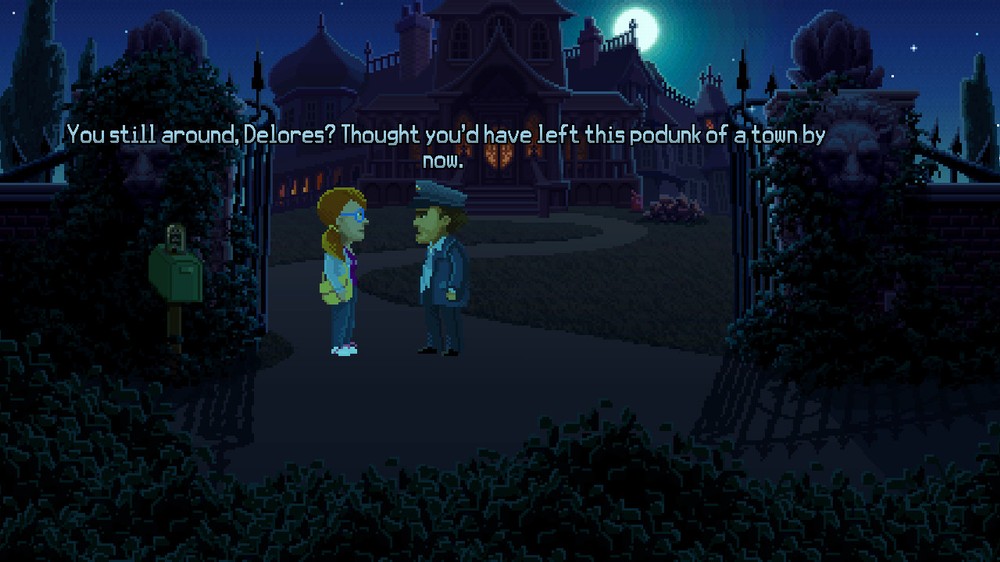When I was a kid, my main source of videogame entertainment was the family PC, on which I was able to play the budget titles that I picked up with my birthday and Christmas money. Many of my games were Lucasarts titles, and I eventually found my way to Full Throttle and the Monkey Island games. I enjoyed the setting, the puzzles, and the sense of humor, and even though some of the puzzles were incredibly difficult or too obscure for my young brain to decipher, I returned to these titles time and again. Ron Gilbert worked on the early Monkey Island games, and though he had left Lucasarts by the time of Full Throttle, his touch can certainly still be felt within that game. So it was, that when Thimbleweed Park was announced, and I saw that Gilbert was involved, my childhood adventure-game-fan reawakened inside me, and my interest was piqued.
Though Thimbleweed Park does betray some modern-day conveniences (such as being able to be displayed on a large TV screen without looking like a smudge), it does a great job of emulating the early- to mid- 1990s era of point-and-click games, from the pixelation of the visuals to the temporal setting of 1987 bringing with it big computers and nods to ‘hint-lines’ to call if you get stuck. Perhaps the biggest change that differentiates Thimbleweed Park from its predecessors is the ability to select the experience that you want from the game: Casual removes some of the more difficult puzzles, leaving the player with a more story-driven experience, while Hard presents an experience more akin to a regular adventure game, with puzzles that may well have you grinding your teeth with frustration.
Thimbleweed Park begins with you playing as Boris Schultz, but thankfully gives you the chance to play as other characters too, as Boris is murdered within the first few minutes after the game begins. You’ll spend the majority of the rest of the game playing as agents Ray and Reyes, with the ability to switch between the two at will. On your travels, you’ll also play as a number of the town’s residents, filling out the backstory of Thimbleweed Park as a place, and allowing you to experience some of the events that occurred before our two agents arrived. There isn’t much difference in playing between Ray and Reyes, though it does prove useful to be able to have an agent at each end of the town, especially as your list of possible destinations begins to grow as the game progresses.
My biggest gripe with Thimbleweed Park, as I played it on consoles, was with the control scheme, and how characters interacted with objects in the world. Your screen is set up with a list of verbs and items at the bottom, allowing you to perform actions such as opening, looking and giving by selecting the particular word and then moving to the item you wanted to interact with. There are two control schemes on offer, one using the d-pad that is a little more restrictive in terms of maneuverability but is more precise for selections, and one using the analogue stick which I found to be a little faster for moving your cursor around the screen, but less accurate to select what you actually want.
Neither control option feels particularly intuitive, and I couldn’t help but feel as if this was a bit of a slap-dash approach to get the game on consoles. It got to the point during some of my sessions where I was enjoying what the game was presenting to me, but I couldn’t stomach any more time with the controls, forcing me to put the game down and play something else until the frustrations passed and I was ready to tackle it once again. It’s always a shame when dodgy controls manage to really hamper the enjoyment of an otherwise good game, and Thimbleweed Park is unfortunately a solid example of how an interactive experience can be harmed when the interactivity doesn’t match-up, quality wise, with the rest of the package.
Thimbleweed Park is a game that I’m torn on judging, for the sole reason that I played it on console and not on PC. If this was a review for the PC version, I’d almost wholeheartedly recommend it for the majority of gamers, as the ability to choose the level of puzzles contained within the game presents an excellent option for those not particularly willing to struggle their way through puzzles, and the story is interesting, bizarre and humorous enough to keep most people’s attention for the duration. However, the control scheme makes the entire experience feel laborious, and I found that I couldn’t get over the feeling that this was a constant obstacle between myself and the game, and that I wasn’t enjoying the experience as much as I could have been because of it. This is one of the rare games in the modern day where the definitive edition can be found on a particular platform, and in the case of Thimbleweed Park, that platform is definitely the PC.



